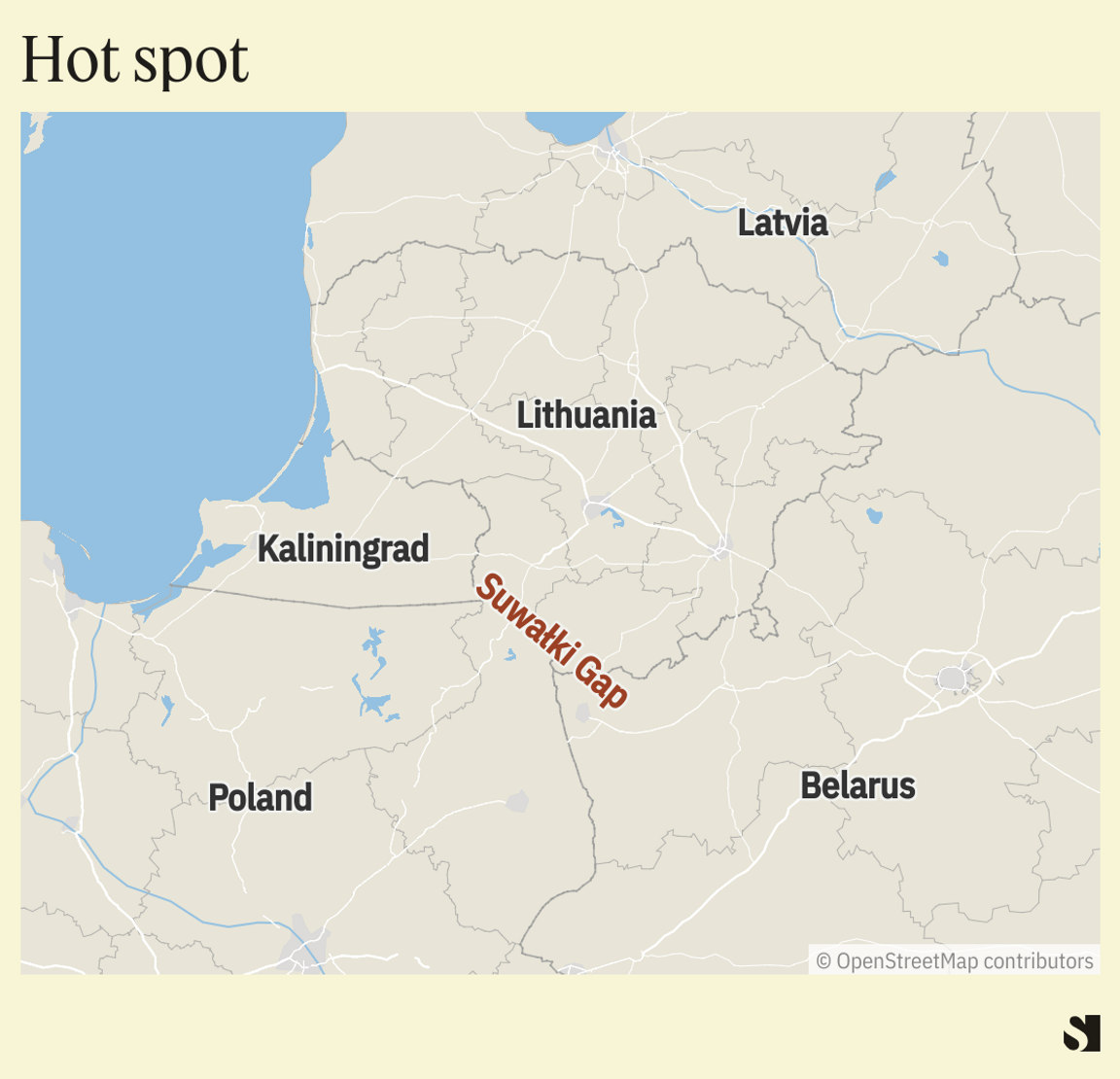 WOJTEK RADWANSKI/AFP via Getty Images WOJTEK RADWANSKI/AFP via Getty ImagesTHE NEWS Belarus is emerging as a critical new front in the war in Europe. Poland, Lithuania, and Latvia have all rushed thousands of troops to their borders over the past few weeks in response to Belarusian military exercises in the west of the country. Officials from NATO countries tell Semafor they are also closely monitoring the influx of Wagner mercenary forces into Belarus, following their failed June uprising in Russia, and their training of Belarusian security services. And they’re concerned about Minsk’s growing ties with Russian ally Iran. NATO and the Baltic states are particularly worried about the security of the Suwalki Gap — a land corridor on Poland’s borders with Lithuania that divides Belarus from the Russian territory of Kaliningrad. The territory has been the subject of NATO’s focus for decades, but the war in Ukraine and Wagner’s growing presence in Belarus has raised the stakes. Any Russian or Russian-backed incursion could divide the three Baltic states from the rest of NATO. NATO and Middle East governments are also tracking Belarus’s growing military partnership with Iran amid evidence the two countries are preparing to build a drone-production facility on Belarusian soil. Belarus’s defense minister met his Iranian counterpart in Tehran late last month and signed a cooperation agreement aimed at strengthening each other’s defenses. Ukrainian and Israeli intelligence believe this includes the development of a drone factory, which could drastically increase Russia’s ability to hit Ukraine with loitering munitions. “There was contact between Iran and Belarus and a cooperation agreement on drones was signed, but the Belarusians deny it for now,” a senior Israeli official briefed on the Belarus intelligence told Semafor. “This is a very concerning development that demonstrates Iran’s determination to undermine European security.”  JAY’S VIEW Belarus has played a central role in aiding Russia since Vladimir Putin invaded Ukraine last February. This has included allowing the Russian military to launch offensive operations from Belarusian soil and store arms, possibly including tactical nuclear weapons. But Minsk’s partnering with the Wagner Group and Tehran is significantly escalating the threat to Ukraine and NATO. NATO officials estimate that 6,500 Wagner forces have moved to Belarus from Russia since June, with more potentially coming. Minsk says the Wagner mercenaries are helping to train security forces. But Polish and Ukrainian officials say some have also been deployed to Belarus’s borders, and they’re concerned that Wagner forces could begin staging sabotage operations against Poland, Lithuania, and Latvia. All three countries are providing significant military support to Ukraine. “The adversary may focus their activities on complicating the supply of military material and technical assistance to Ukraine from partner countries,” Lieutenant General Serhiy Nayev, commander of the Joint Forces of the Ukrainian Armed Forces, told Ukrainian radio on Monday. The building of an Iranian drone production facility in Belarus would also significantly enhance Russia’s ability to hit Ukraine. Russia has been deploying Iranian-made kamikaze drones since last fall. Many of the drones, according to U.S. and NATO officials, were ferried from Iran to Russian forces over the Caspian Sea. And Russia has started building an Iranian drone production facility in the autonomous region of Tartarstan. But a site in Belarus would allow the Kremlin to launch kamikaze drones from another front, and drastically increase its supply. Belarusian opposition groups have reported seeing Iranian engineers visiting the city of Gomel, which is near the Ukrainian border, alongside Russian intelligence officers in recent weeks. And Belarus is receiving support from China as well. Beijing announced on Monday that Defense Minister Li Shangfu will visit Minsk this month to strengthen Belarusian-Chinese ties. To read the whole story, click here. | 








